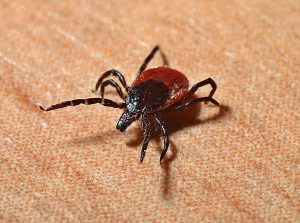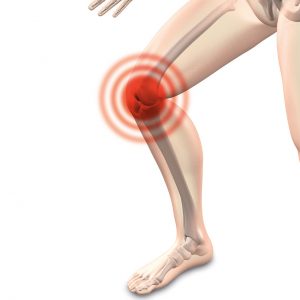June is Myasthenia Gravis Awareness Month. This autoimmune disorder is one of many that you might be unfamiliar with, unless you or someone you care about is living with it. Myasthenia gravis, or MG, comes from the Greek and Latin words meaning “grave muscular weakness” because it causes the voluntary muscles to become weak and tired. It is a rare neuromuscular disorder that affects 14-20 out of every 100,000 people, but, according to the Myasthenia Gravis Foundation of America, MG is the most common primary disorder of neuromuscular transmission. This month, we want to shine a light on this rare condition, its symptoms, and the treatments available.
What Causes Myasthenia Gravis?

Myasthenia gravis is not inherited and is not contagious, although it is important to note that a baby whose mother has the condition can develop a temporary form of MG that usually resolves itself within 2-3 months. MG is an autoimmune disorder, which is a condition that occurs when your immune system mistakes your healthy tissues and cells for a virus and attacks them. The exact cause of MG is unclear to scientists and doctors, but there is a theory that some kinds of viral or bacterial proteins could cause the body to attack the neurotransmitter acetylcholine, which is important for the communication between nerve cells and muscles. When this happens, antibodies destroy muscle receptor cells, which means fewer available muscle fibers, which is why muscles become weak and tire easily.
Experts also believe that there is a possible connection between MG and the thymus gland. The thymus gland starts out large in childhood and grows until puberty. After it is done growing around the time of puberty, it gets smaller and is eventually replaced with fat. A large number of adult patients with MG have an abnormally large thymus gland, and about 1 in 10 patients with MG have a benign tumor in their thymus gland.
Who Does It Affect?
MG can strike anyone at any age, but is more frequently seen in young women between the ages of 20 and 30, and men aged 50 and older.
MG Symptoms
The main symptom of MG is weakness of the voluntary skeletal muscles. The muscle weakness usually gets worse with more activity and improves with rest and a good night’s sleep. Generally, the muscles around the eyes will be affected first, which will cause the eyelids to droop. There are other symptoms that can also occur in differing degrees, which include:
- Difficulty swallowing or breathing
- Drooping eyelids
 Double vision
Double vision- Muscle weakness and fatigue
- Facial paralysis
- Hoarse voice
- Trouble pronouncing words
- Weakness of the neck or limbs
If someone with MG suffers what is known as a myasthenic crisis, they could become paralyzed. This type of crisis can be triggered in those with weakened respiratory muscles by an infection, fever, or a reaction to a medication. Myasthenic crises are life threatening and require emergency treatment with mechanical breathing assistance such as a ventilator. Plasmapheresis and immunoglobulin therapies can help, which we will explain in more detail later.
How Is Myasthenia Gravis Diagnosed?
If you experience any of the above symptoms, bring them up with your doctor; your doctor will then perform a physical exam, as well as a neurological exam in order to check your reflexes and motion functions, look for muscle weakness, and make sure that your eyes are moving properly. Other tests that your doctor might perform to diagnose the condition include:
- Blood tests to look for antibodies
- Genetic tests to check if the condition runs in your family
- Repetitive nerve stimulation test
- Electromyogram (EMG) to measure the electrical activity of a muscle
- CT scans or MRI to rule out a tumor in the thymus gland
Treatment Options
Unfortunately, there is no cure for myasthenia gravis, but there are ways to manage the symptoms. Early detection is the best way to manage the condition. Medications including Cholinesterase inhibitors and immunosuppressants can improve communication between nerves and muscles, and reduce the production of the antibodies that cause MG. Other treatment options include:

- Thymectomy– surgery to remove the thymus gland, which can help improve symptoms. This surgery has been shown to reduce symptoms in more than 70% of people who don’t have cancer of the thymus.
- Plasmapheresis– a procedure that removes abnormal antibodies from the blood and replaces them with normal antibodies from donated blood.
- Immunoglobulin– antibodies, or glycoprotein molecules from white blood cells are infused through an IV to decrease the immune system’s attack on the nervous system.
Changing your lifestyle can also help alleviate symptoms of MG. If you are diagnosed with the condition, get plenty of rest and avoid stress and heat exposure. MG is a lifelong medical condition, but if detected early, most people with myasthenia gravis can improve muscle strength and lead normal lives.
If you are diagnosed with MG, medications, surgery, and doctor appointments will be necessary, which can be costly if you do not have health insurance, or a plan with enough coverage. EZ.Insure can find you a plan that will cover all of your needs, while saving you money. Our agents can compare plans in your area in minutes because we work with the top-rated companies in the country. No obligation or hassle. To get free quotes, simply enter your zip code in the bar above, or to speak to an agent, call 888-350-1890.















